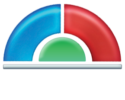After almost 2 years of the COVID- 19 pandemic, You’re probably getting tired of even talking about it. Although if you’re an HR or Health and Safety professional for the organization, It’s imperative for you to know the essential tips for COVID screening. Especially after the announcement from the Biden administration, Announcing that OSHA is enforcing vaccine mandates.
Some of the main points of this new mandate are also known as COVID-19 Vaccination and Testing ETS. (Emergency Testing Standard) are the following:
- Companies with more than 100 employees will be mandated to require coronavirus vaccinations for their workers or do regular testing by Jan. 4 being implemented on an emergency basis Department of Labor new policy would require
- Weekly testing for unvaccinated individuals, at their own expense
- Daily Health screening of Face-masking for workers who choose not to get vaccinated
- Employers must provide paid time off for workers to get vaccinated
As an employer what if I do nothing about this new vaccine mandate?
Currently, multiple organizations are challenging the government in court with this new ruling. At the time of this article, it is still being decided upon. Some of the fines that OSHA is structuring per violation are the following:
10,000, and imprisonment for not more than six months, or both, for anyone who ‘knowingly makes any false statement, representation, or certification’ in any application, record, report, plan, or another document” pursuant to the new rule
- $14,000 per violation with the potential for multiple citations.
- $70,000 for “serious violations” and $700,000 for willful or repeated violation
What are the requirements for vaccination exemptions?
The Equal Employment Opportunity Commission States a vaccine mandate policy that offers medical and religious exemptions, they are also projecting that the OSHA policies will do the same. Your Company will need a protocol to assess the requests that fall into each of these categories and to seek advice from legal counsel to determine how to execute the process,
Another is medical exemptions can be requested based on a based on severe reaction to a vaccine or other condition. Some employees might attempt to request an exception due to a previous COVID-19 infection, although prior exposure to COVID-19 offers some protection against future infection. But the CDC suggests a full vaccination even after recovering from your from COVID-19 exposure, as there is data to demonstrate improved protection for this group and it’s not clear what level of antibody indicates protection. The previous exposure to COVID-19 does not qualify for an exemption. Pregnant women are at increased risk from COVID and should be encouraged to be vaccinated. In addition, Pregnancy should not be considered as a reason not to apply vaccine mandate exception.
On the other hand, Religious exemptions are typically based on tradition or firmly held belief. Despite religious beliefs, multiple religious organizations have been proactive in their community to get vaccinated, including the Vatican, the National Association of Evangelicals, the National Council of Churches, the Jewish Rabbinical Council of America and the National Muslim Task Force on COVID-19.
Having said that, these individuals could potentially have symptoms of COVID-19 therefore they need to be treated as a potential threat. And provisions for it to be made for them to have a negative COVID-19 test and also wear a mask at their workplace.
Why encourage vaccination now?
Unvaccinated employee health represents both safeties of the organization’s risk which could expose other fellow workers, which increases the likelihood of illness and time spent at home quarantining, and high probability of costly COVID-19 hospital stays. Increased levels of employee health and vaccination are essential to reduce these risks, and employers should plan or take action now as they await the upcoming Occupational Safety and Health Administration (OSHA) Emergency Temporary Standards, which will include the mandate requirement for employers.
What made me curious and ponder is if this does not pass the ruling, is this something that we should be doing to be proactive? I say this because today is the COVID-19 virus or a variant of this virus. What’s the next crisis going to be and is your organization ready for it?
Which employees should be considered “fully” vaccinated?
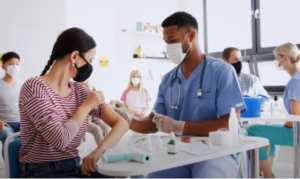
When vaccines started to roll out there were multiple options and variations and not to mention some disappointing circumstances with AstraZeneca.
To date, individuals who are considered fully vaccinated (i.e., two doses of an mRNA vaccine or one dose of a Johnson & Johnson/Janssen vaccine) should also be validated as vaccinated for the purposes of this mandate. Companies can also deem employees fully vaccinated if they have completed any World Health Organization-approved vaccine regimen outside of the United States. Meanwhile, immunosuppressed, the elderly and adults that are at higher risk can qualify to have an additional dose, employers cannot ask employees if they have a condition that would qualify them for this extra vaccine dose. Moreover, the protection of the initial vaccination course is far more important to reducing community risk than booster shots.
Developing a workplace COVID-19 response plan
As states and local governments reduce their stay-at-home orders in response to COVID-19, organizations will be dealing with new challenges regarding the safety of workers, including whether it is permissible to ask employees about symptoms and risk factors, as well as whether employees can be subjected to a COVID-19 health screening test.
In order to reduce the risk of exposure to COVID-19 in the workplace, employers should develop an infectious disease preparedness and response plan; prepare to implement basic infection prevention protocols; develop policies and procedures for prompt identification and isolation of sick people; develop, implement and communicate about workplace flexibilities and protections; implement workplace controls, and follow existing Occupational Safety and Health Administration (OSHA) standards.
What kind of COVID-19 Tests are allowed?
If you are wondering what kind of test OSHA is allowing to be used, they are the following:
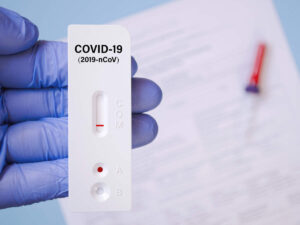
- The rapid test (an antigen test) yields results in about 15 minutes but can give inaccurate results. It appears to be most effective when someone is experiencing symptoms of COVID-19.
- The PCR test (polymerase chain reaction) is the gold standard test. Results are usually available in two to four days. This is the most accurate test for both symptomatic and asymptomatic individuals, which makes it more reliable for routine testing.
Over-the-counter (OTC) self-testing kits are widely available at pharmacies and online, some with mail-in options for results (PCR), while others give results in about 15 minutes (rapid antigen). The ETS allows for the use of OTC self-tests that are observed by employers or authorized telehealth providers. Self-administered and self-read rapid tests are not acceptable under the ETS.
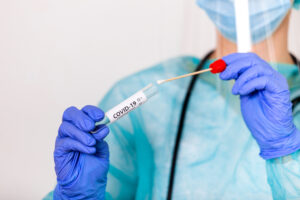
OSHA’s mission is to minimize the spread of COVID-19 and ensure a healthy work environment for employees and implement this health screening process. This new mandate is a lot less strict than what some private organizations implemented several weeks ago, stating that all employees must be vaccinated or not come to work at all. OSHA’s approach is a lot less strict, although it’s just a responsibility from the unvaccinated worker to pay for their own COVID test.
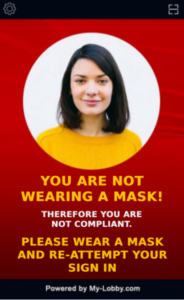
Health screening workflow for unvaccinated employees
The question remains how are we going to manage the compliance of unvaccinated workers on a daily basis without increasing the cost of compliance?
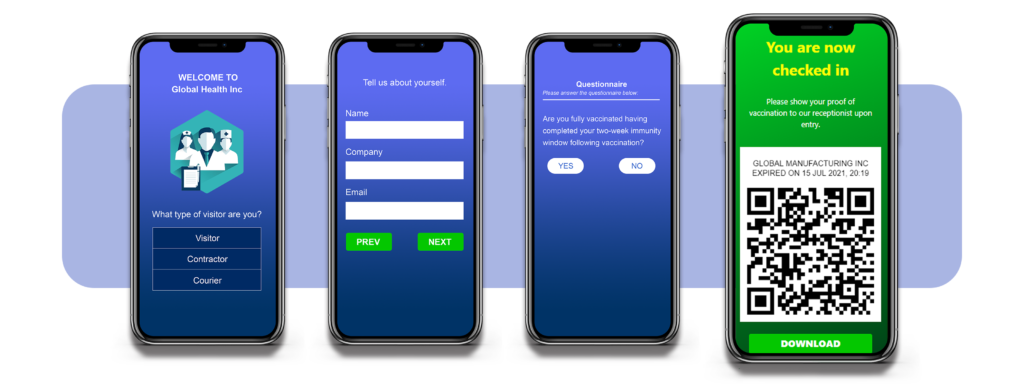
MyLobby has a solution that will detect if the individuals are wearing a mask or not. If they are not wearing a mask it’ll send an immediate noncompliant notification to their supervisor. You can also take it one step further and connect the device to your access control doors and not open the doors if the individuals are not compliant.
Uploading negative Covid-19 test makes health screening frictionless for corporations
In addition, the platform will accommodate uploading a negative Covid test right from their mobile device. Once the compliance team validates the negative Covid test they will be sent an email with a QR code that will validate for one week as per OSHA guidelines. Once they show the tablet kiosk their QR code to identify themselves it will then scan their face to determine whether or not they are wearing a mask. Once they meet the criteria it will capture individual health screening entries in an encrypted database for record-keeping. Furthermore, if your organization requires temperature reading during the health screening process it will also capture be fully integrated into the system automatically.
Below is a video walk-through on how we capture results from onsite COVID screening:
What if health screening guidelines change?
Since this pandemic started we have witnessed and experienced the spread of COVID-19 evolve as a result government and enforcing agencies like the CDC and OSHA have evolved their guidelines and mandates accordingly. MyLobby platform that can be easily customized to accommodate any changes to workflow or new legislative mandates. With these changes, you’re able to log into the admin panel and make those changes to address policy changes.
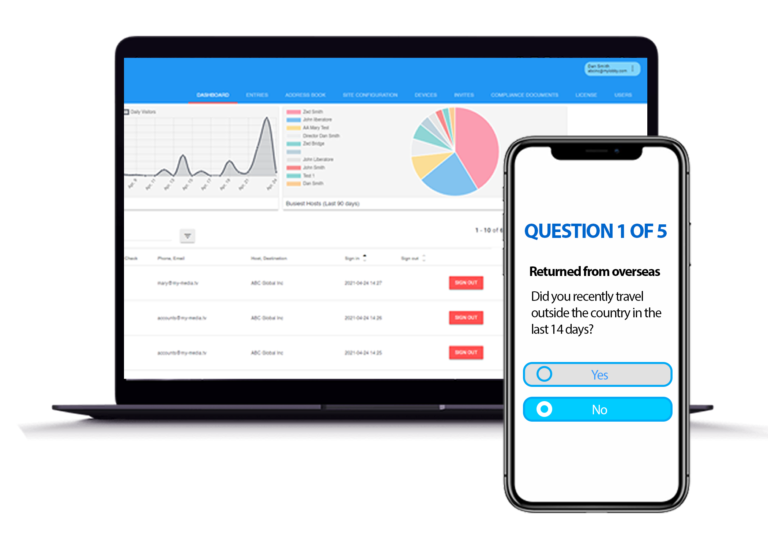
To learn more about how we can help organizations maintain a healthy workplace and comply with government regulations visitors us at www.MyLobby.co.
OR
